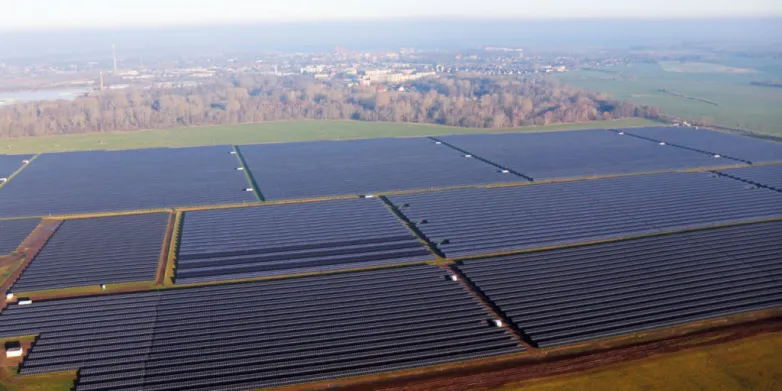Baywa re sells German grid-parity solar plant to Encavis
- The Munich-based group sold five solar parks with a total generation capacity of around 35 MW to the Hamburg-headquartered power producer. One of the five plants was among Germany’s first unsubsidized PV projects.

Solar developer Baywa re today announced it has sold five German solar parks with a combined generation capacity of around 35 MW to the Encavis Infrastructure Fund II owned by German solar and PV plant operator Encavis.
The projects sold include the 8.8 MW Barth V solar plant at the Stralsund-Barth Baltic Sea Airport, which was one of Germany’s first unsubsidized solar parks. Having already developed solar capacity at the site, Baywa re was able to reduce expense in the planning of cable routes and electricity network connections for the project, which was commissioned in October and which holds a five-year power purchase agreement signed by Baywa energy trading unit Clean Energy Sourcing. Clean Energy sells the power on to the free energy market.
Umweltbank last month announced it had provided a 20-year, non-recourse loan for the Barth V plant, which was Baywa re’s first unsubsidized solar park in Germany.
Newly connected
The developer sold three more solar projects with a total generation capacity of 20 MW in Barth, in the northeastern region of Mecklenburg-Vorpommern and a 6.5 MW facility in Seifertshofen, southern Bavaria. The company had connected four of the five systems this year, with Barth III in operation since February 2017.
Baywa re did not disclose financial details of the transaction.
“A year ago, we set up Europe’s first subsidy-free solar park in sunny Spain,” said Baywa energy director Matthias Taft. “Today, we can prove that unsubsidized solar power also works in Germany and is competitive.” The director said there had been plenty of interest when the solar portfolio was listed for sale.
Encavis CEO Karsten Mieth said: “We are particularly pleased that with Barth V we have purchased a milestone project for the fund and can do our part in a new phase of renewable electricity generation.”
Also read


